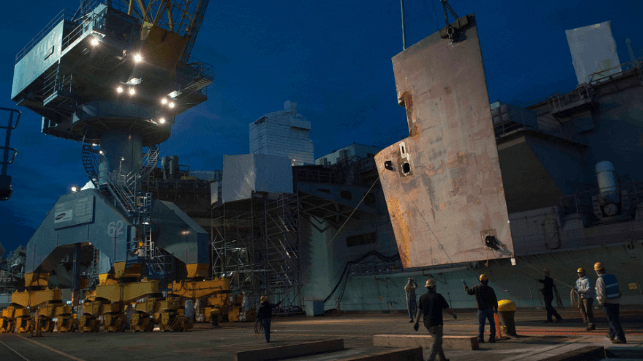GAO: US Shipyard Issues are Second-Biggest Defense Readiness Problem

The Government Accountability Office (GAO) sees the U.S. Navy's shipyard industrial base as the second-greatest readiness problem in the armed forces, second only to the spiraling maintenance costs of the F-35 fighter program, the office's senior defense analyst told a Senate panel last week.
Secretary of the Navy Carlos Del Toro has issued repeated warnings that the shipyard industrial base is falling behind, due to manning shortfalls, outdated operating practices and underinvestment in infrastructure. Three of the service's top-priority programs - the Constellation-class frigate, the Columbia-class ballistic missile sub and the Virginia-class attack sub - are running one to three years behind schedule.
At the Senate armed services subcommittee hearing last week, Sen. Dan Sullivan expressed concern about these delays and asked the Navy for a comprehensive solution.
"If you have big ideas, my own view is that this committee would embrace it," Sen. Sullivan said. "Because we gotta get by this. If the Chinese keep cranking out 10-12 ships a year and we're struggling . . . we are going to be in a real big hurt locker."
In testimony about yard structure, Adm. James Kilby echoed one of Secretary Del Toro's "big ideas" - a call for more players to get involved in the defense industrial base. "I need more yards to outsource work," Kilby said.
In written testimony, GAO director of defense capabilities Diana Maurer told the panel that on the repair side of the equation, the Navy's own public shipyards are also in trouble, and that the service doesn't know yet how much it will cost to correct the "poor condition of infrastructure."
"The Navy has not developed a full cost and schedule estimate for its [shipyard repair] plan and reports that it will not be able to do so until fiscal year 2025 - three years later than originally planned," wrote Maurer. The complications include the need to solicit input from each shipyard, as well as the uncertainties inherent in the estimating process and the volatile pricing of key materials.
The early indications of cost growth for public yard repair are astronomical. The latest estimate for Pearl Harbor alone comes to $16 billion, nearly four times the 2018 budget estimate for all four shipyards.
